 | |
Book Trailer:
An Indigenous Peoples' History of the United States
by Roxanne Dunbar Ortiz
|
|

New CCDS Book Reporting on Vietnam
|
 The new annual edition of our journal of discussion and analysis is now out. More than 170 pages, it includes 14 articles on strategy austerity, organizing, and the right. Cost is $10 plus shipping. Or get one by becoming a sustainer. Click the title to buy it directly. The new annual edition of our journal of discussion and analysis is now out. More than 170 pages, it includes 14 articles on strategy austerity, organizing, and the right. Cost is $10 plus shipping. Or get one by becoming a sustainer. Click the title to buy it directly.
|
|
Radical Jesus:
A Graphic History of Faith  By Paul BuhleHerald Press By Paul BuhleHerald Press
|

Want to Know what CCDS has
been doing...Check it Out!
|
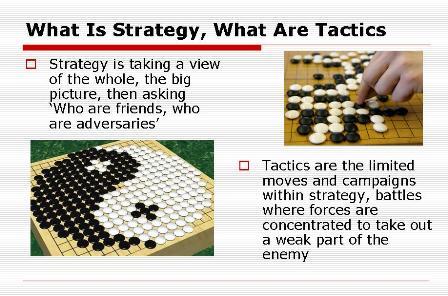 Keep On Keepin' On Keep On Keepin' OnHating the 'Middle Class,' Why Socialists Run in Elections, Strategy and Tactics Slide Slow, Class and Privilege, the Green New Deal ...and other Short Posts on Tumblr by Carl Davidson
|

Edited by Carl Davidson Revolutionary Youth the the New Working Class: The Praxis Papers, the Port Authority Statement, the RYM Documents and other Lost Writings of SDS
Changemaker, 273pp, $22.50
For the full contents, click the link and view 'Preview' under the cover graphic.
|
|
By Randy Shannon, CCDS

"Everyone has the right to work, to free of employment, to just and favorable conditions of work and to protection against unemployment."
- United Nations Universal Declaration of Human Rights, December 10, 1948
I. Introduction
The "Great Recession" that began in 2007 has caused the greatest percent of job losses since the Great Depression of 1929. This crisis is the end of an era of unrestrained 'neo-liberal' capitalism that became public policy during the Reagan administration. The crisis marks a new level of instability with the growth of a global financial elite that targeted US workers and our trade unions after World War II.
|
|
Order Our
Full Employment Booklets
 |
...In a new and updated 2nd Edition
Capitalism may well collapse under its own excesses, but what would one propose to replace it? Margaret Thatcher's mantra was TINA...There Is No Alternative. David Schweickart's vision of "Economic Democracy" proposes a serious alternative. Even more fundamentally, it opens the door to thinking about alternatives. His may or may not turn out to be the definitive "successor system," but he is a leader in breaking out of the box. |
 by Paul KrehbielAutumn Leaf Press, $25.64
by Paul KrehbielAutumn Leaf Press, $25.64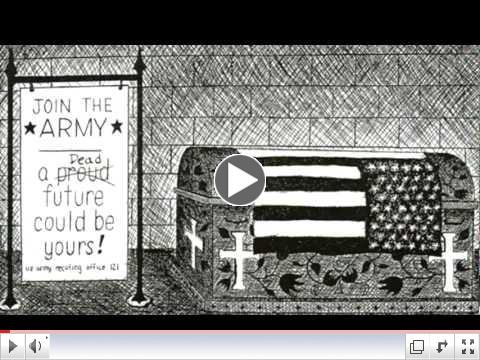 | | Shades of Justice Video: Bringing Down a President, Ending a War |
|
 By Giuseppe Fiori
Verso, 30 pages
|

Essays on Mondragon, Marx, Gramsci
and the Green and Solidarity Economies |
Solidarity Economy:What It's All About

Edited by Jenna Allard, Carl Davidson and Julie Matthaei
Buy it here...
|

- Foreword by Susan Brownmiller
- Preface by Ken Wachsberger
$37.50 + $6 shipping
|
|
Discussion Documents for a Militant Movement
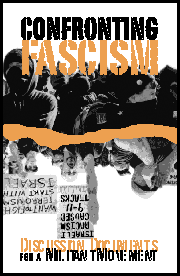
By Don Hamerquist
|
|
|
|
An Invitation to CCDSers and Friends...
 The Tough Nut The Tough Nut
to Crack: Zionist
Hegemony Here
We're the Committees of Correspondence for Democracy and Socialism...Do you have friends who should see this? Pass it on...Do you have a blog of your own? Others you love to read every day? Well, this is a place where you can share access to them with the rest of your comrades. Just pick your greatest hits for the week and send them to us at carld717@gmail.com! Most of all, it's urgent that you oppose the war on Gaza, defend voter rights, plan for 2014 races now, oppose austerity, support the 'Moral Mondays' in North Carolina, the fight for the Green New Deal, a just immigration policy and the Congressional Progressive Caucus' 'Back to Work Budget'! We're doing more than ever, and have big plans. So pay your dues, make a donation and become a sustainer. Do it Now! Check the link at the bottom... |
The Nightmare in Gaza

By Noam Chomsky Alternet
August 7, 2014 - Amid all the horrors unfolding in the latest Israeli offensive in Gaza, Israel's goal is simple: quiet-for-quiet, a return to the norm.
For the West Bank, the norm is that Israel continues its illegal construction of settlements and infrastructure so that it can integrate into Israel whatever might be of value, meanwhile consigning Palestinians to unviable cantons and subjecting them to repression and violence.
For Gaza, the norm is a miserable existence under a cruel and destructive siege that Israel administers to permit bare survival but nothing more.
The latest Israeli rampage was set off by the brutal murder of three Israeli boys from a settler community in the occupied West Bank. A month before, two Palestinian boys were shot dead in the West Bank city of Ramallah. That elicited little attention, which is understandable, since it is routine.
"The institutionalized disregard for Palestinian life in the West helps explain not only why Palestinians resort to violence," Middle East analyst Mouin Rabbani reports, "but also Israel's latest assault on the Gaza Strip."
In an interview, human rights lawyer Raji Sourani, who has remained in Gaza through years of Israeli brutality and terror, said, "The most common sentence I heard when people began to talk about cease-fire: Everybody says it's better for all of us to die and not go back to the situation we used to have before this war. We don't want that again. We have no dignity, no pride; we are just soft targets, and we are very cheap. Either this situation really improves or it is better to just die. I am talking about intellectuals, academics, ordinary people: Everybody is saying that."
In January 2006, Palestinians committed a major crime: They voted the wrong way in a carefully monitored free election, handing control of Parliament to Hamas.
The media constantly intone that Hamas is dedicated to the destruction of Israel. In reality, Hamas leaders have repeatedly made it clear that Hamas would accept a two-state settlement in accord with the international consensus that has been blocked by the U.S. and Israel for 40 years.
In contrast, Israel is dedicated to the destruction of Palestine, apart from some occasional meaningless words, and is implementing that commitment.
The crime of the Palestinians in January 2006 was punished at once. The U.S. and Israel, with Europe shamefully trailing behind, imposed harsh sanctions on the errant population and Israel stepped up its violence.
The U.S. and Israel quickly initiated plans for a military coup to overthrow the elected government. When Hamas had the effrontery to foil the plans, the Israeli assaults and the siege became far more severe.
There should be no need to review again the dismal record since. The relentless siege and savage attacks are punctuated by episodes of "mowing the lawn," to borrow Israel's cheery expression for its periodic exercises in shooting fish in a pond as part of what it calls a "war of defense."...(Click title for more)
|
|
By Nick Wing & Samantha Lachman
Huffington Post
August 5, 2014 - Israel and Palestinian militants in Gaza began observing a 72-hour cease-fire on Tuesday after nearly a month of fighting. But the complicated history and context of the broader Israeli-Palestinian conflict can make it difficult to form a coherent opinion on the current offensive.
One thing is undeniable, regardless of one's political views, nationality or cultural or religious affiliation: The death and destruction is catastrophic and ever-mounting. But in response to the violence that has claimed more than 1,800 Palestinian lives -- the majority of them civilians -- and killed nearly 70 Israeli soldiers and civilians, a common assumption is that one must choose a side, and that blame can be assigned exclusively to one party or the other. Such an approach to the conflict tends to be selective and overly simplistic, so we've compiled a variety of editorials and voices to get a better sense of the situation. Here's what you need to know:
1. The pain of loss cuts incredibly deep on both sides.
The same day that thousands of Israelis gathered to mourn at the funeral of slain Lt. Hadar Goldin, 23, of the Israel Defense Forces, Asmaa al-Ghoul wrote a column in Al-Monitor describing the tragedy her family had suffered a few miles across the border.
Tears flowed until my body ran dry of them when I received a telephone call on Aug. 3, informing me that my family had been targeted by two F-16 missiles in the city of Rafah. Such was the fate of our family in a war that still continues, with every family in the Gaza Strip receiving its share of sorrow and pain.
My father's brother, Ismail al-Ghoul, 60, was not a member of Hamas. His wife, Khadra, 62, was not a militant of Hamas. Their sons, Wael, 35, and Mohammed, 32, were not combatants for Hamas. Their daughters, Hanadi, 28, and Asmaa, 22, were not operatives for Hamas, nor were my cousin Wael's children, Ismail, 11, Malak, 5, and baby Mustafa, only 24 days old, members of Islamic Jihad, the Popular Front for the Liberation of Palestine or Fatah. Yet, they all died in the Israeli shelling that targeted their home at 6:20 a.m. on Sunday morning.
2. The objectively terrible conditions in Gaza play a part in the disproportionate casualties.
Mohammed El Halabi, World Vision Program Manager in Gaza, writes of "The day seven of my family died in Gaza," explaining the conditions that have made Israeli shelling so deadly. As a reminder, most Palestinians in Gaza literally can't leave.
Life in the Gaza Strip is like being trapped inside a giant prison. More than 1.8 million people live in an area only 32 kilometres long and a few kilometres wide. In other conflict zones around the world, families are usually able to flee to other parts of the country, or across borders. But here there is no escape, United Nations shelters are already overwhelmed.
Read the rest here.
...(Click title for more)
|
|
Who Rules Washington?
By Tom Englehardt
Beaver County Peace Links via Tom Dispatch
August 3, 2014 | As every schoolchild knows, there are three check-and-balance branches of the U.S. government: the executive, Congress, and the judiciary. That's bedrock Americanism and the most basic high school civics material. Only one problem: it's just not so.
During the Cold War years and far more strikingly in the twenty-first century, the U.S. government has evolved. It sprouted a fourth branch: the national security state, whose main characteristic may be an unquenchable urge to expand its power and reach.
Admittedly, it still lacks certain formal prerogatives of governmental power. Nonetheless, at a time when Congress and the presidency are in a check-and-balance ballet of inactivity that would have been unimaginable to Americans of earlier eras, the Fourth Branch is an ever more unchecked and unbalanced power center in Washington.
Curtained off from accountability by a penumbra of secrecy, its leaders increasingly are making nitty-gritty policy decisions and largely doing what they want, a situation illuminated by a recent controversy over the possible release of a Senate report on CIA rendition and torture practices.
All of this is or should be obvious, but remains surprisingly unacknowledged in our American world. The rise of the Fourth Branch began at a moment of mobilization for a global conflict, World War II. It gained heft and staying power in the Cold War of the second half of the twentieth century, when that other superpower, the Soviet Union, provided the excuse for expansion of every sort.
Its officials bided their time in the years after the fall of the Soviet Union, when "terrorism" had yet to claim the landscape and enemies were in short supply. In the post-9/11 era, in a phony "wartime" atmosphere, fed by trillions of taxpayer dollars, and under the banner of American "safety," it has grown to unparalleled size and power. So much so that it sparked a building boom in and around the national capital (as well as elsewhere in the country).
In their 2010 Washington Post series "Top Secret America," Dana Priest and William Arkin offered this thumbnail summary of the extent of that boom for the U.S. Intelligence Community: "In Washington and the surrounding area," they wrote, "33 building complexes for top-secret intelligence work are under construction or have been built since September 2001. Together they occupy the equivalent of almost three Pentagons or 22 U.S. Capitol buildings - about 17 million square feet of space." And in 2014, the expansion is ongoing....(Click title for more)
|
By David Neiwert
SPLC's Hatewatch
July 31, 2014 - After stumbling out of the gate last month, militia activists in Texas are now appearing along the U.S.-Mexico border as part of a vigilante campaign to "secure our border" in the midst of a refugee crisis involving unaccompanied children from Central America.
According to a handful of news reports out of Texas, the militiamen - who initially were nowhere to be seen after publicizing their plans last month - are now conducting patrols in some areas in hopes of stopping incursions by border crossers.
The San Antonio Express-News published a report this week that listed some of the groups that have been involved in the patrols and included numerous photos of the militiamen.
Strikingly, the patrols are being organized secretively, and all the militiamen involved have insisted on anonymity.
The photos published with the report show dozens of men wearing camouflage gear and carrying a variety of semi-automatic weapons, patrolling areas of the border of southern Texas. In some cases, the men are wearing masks; in others, their faces have been blurred by photo retouching.
The individual who provided the photos insisted on blurring the visible faces of participants, saying they need anonymity to protect against retaliation by "cartel and gang members." Nonetheless, some of the men in the photos contacted the paper and demanded that it remove the images, blurred or not, from the website.
Kolten Parker, the reporter who handled the story, told the SPLC that he and his editors tried to independently confirm as many details as possible, given that the militias have been secretive about who they are and when and where they are conducting patrols.
"We've spoken with ranchers in the area where these patrols are occurring, and we've seen plenty of evidence that they are," Parker said. Judging from the 30 or so photos that the paper ran, he said that so far the patrols are being conducted in a well-organized manner.
Barbie Rogers of the Patriot Information Hotline told the paper that there are 10 "operations on the ground in Texas" this week....(Click title for more)
|
The Global African with Bill Fletcher, Jr.
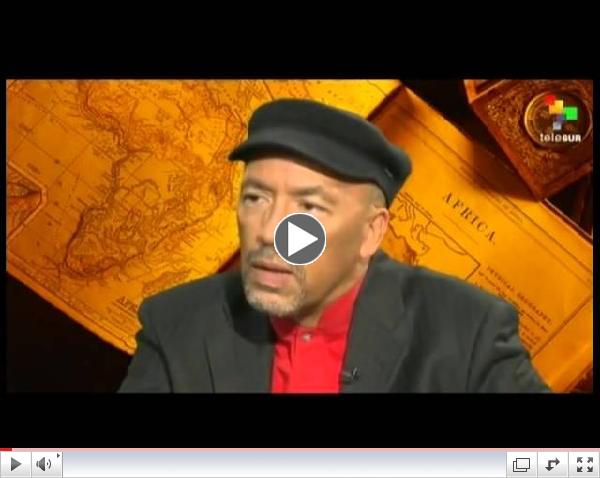 | |
A dialogue program between Bill Fletcher, Jr. and guests who discuss issues and struggles relating to Africa and the African diaspora around the world
|
|
Coal Miners Are Mad...and Scared.
And They Have a Right To Be

By Mel Packer Vox Populi via Portside.org
August 1, 2014 - Why are union miners falling for the company line that there's a "war on coal" when the coal and gas companies are really making a war on ALL of us, on our planet, on our children's futures and certainly on those very miners who are marching on behalf of the coal companies?
In 1968, the Mannington Mine in Farmington WV owned by Consol Coal, caught fire, blew up, and 78 miners were buried, many likely alive.
In 1972, a Consol mine in Blacksville, WV, caught fire and 9 miners were buried (again, likely alive) when Consol sealed the mine off to stop the fire and save the coal.
I remember those well, having been involved in labor struggles as a working Teamster truck-driver back then with friends in the coal fields.
In the very early '70s, a militant movement of rank and file union coal miners called the Miners for Democracy was born, threw out corrupt leaders, and rebuilt a union that was militant, demanded safe working conditions, and knew who the enemy was, and still is - the owners of those coal companies like Consol.
 I knew and worked with some of them. I even worked in the mid '70s to try and persuade some folks to revive the MFD as it had now dissolved and some of the militancy and class-consciousness was fading. But at its founding, the MFD knew what it was about, knew that the coal companies were evil, and knew miners had to stick up for each other as workers...or die.
Yesterday, I stood on a sidewalk outside of this building holding a sign calling for reduced carbon emissions while a thousand or so miners and family members marched by supporting those same companies that have brutalized and exploited the communities of Appalachia for decades.
What happened to make union coal miners support the companies that buried some ancestors alive, gave most of the survivors black lung and then tried to deny them benefits, and laid them off by the tens of thousands as the companies opened non-union mines and began ruining the "almost heaven" hills and valleys of WV with mountain top removal which employs few, if any, union miners.
Why are union miners falling for the company line that there's a "war on coal" when the coal and gas companies are really making a war on ALL of us, on our planet, on our children's futures and certainly on those very miners who are marching on behalf of the coal companies?
BECAUSE THEY'RE SCARED TO DEATH OF THE FUTURE.
Last year, I traveled thru some of the same mining communities where friends lived and worked in the early 70's, towns like War and Welch that were once friendly,solid, working class towns, places you'd be proud to live. When I was there last year, I couldn't even find a pizza shop open on a Sunday and most businesses were boarded up....(Click title for more)
|
|
Rosa Luxemburg Foundation hosts 'Mapping Socialist Strategies' Meeting near New York City Aug 1-4
By Harry Targ
Heartland Radical
There's something happening here
What it is ain't exactly clear...
I think it's time we stop, children, what's that sound?
Everybody look--what's going down?
There's battle lines being drawn
Nobody's right if everybody's wrong
Young people speaking their minds
A gettin' so much resistance from behind...
Everybody look--what's going down?
We better stop, now, what's that sound?
Everybody look--what's going down
(From "For What It's Worth," Stephen Sills, Buffalo Springfield, 1967)
The Center for Global Justice, San Miguel de Allende, Mexico sponsored the conference "Moving Beyond Capitalism" (with a variety of partnering activist and scholarly organizations) which was held from July 29 to August 4.
About 200 participants came from Mexico, the United States, Central America, China, and Israel. Some were progressive academics, others community activists, environmentalists, film makers, artists, and trade union representatives. The support staff included activist retirees, mostly United States citizens, who live in San Miguel.
The conference reflected on visions of grassroots transformations of economic, political, and physical environments everywhere on the planet. There were debates about workers' democracy, cooperatives, a green socialist agenda, and the salience of the spread of protest all across the globe driven by exploitation, authoritarian institutions, environmental devastation, hunger, and violence.
Cuban philosophers and economists spoke about the reforms being carried out in their country to stimulate further economic sustainability and human development. A centerpiece of the Cuban reform strategy, they argued, was building workers' cooperatives in both the rural and urban sectors. Others spoke of their research on forms of workplace democracy and cooperatives in Chiapas, Mexico, Spain, the United States, and Argentina.
Several participants emphasized the environmental imperatives that must be incorporated into any efforts to move beyond capitalism. Data was presented that showed conclusively how threatened planet earth is by carbon emissions and that immediate steps must be taken to begin to reverse climate change.
At virtually the same time the Rosa Luxemburg Stiftung-New York office assembled about 100 progressives, mostly from left organizations and the media from Europe and North America to discuss "Mapping Socialist Strategies."
Panelists and workshops addressed the impacts of and responses to neoliberal economic policies, protests against austerity programs, recent political mobilizations including the teachers strike in Chicago, and efforts to expand cooperatives in Jackson, Mississippi. Most critically, this conference addressed rebuilding the Left in the Global North addressing key questions about the labor movement, community organizing, electoral politics, political education, and alternative media. ...(Click title for more)
|
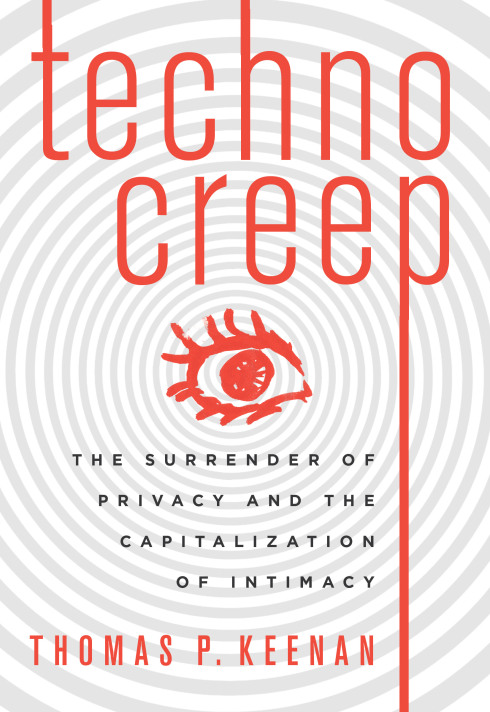 By Ron Jacobs By Ron Jacobs
The Rag Blog
Aug 5, 2014 - We live in a world overwhelmed with intrusive technological gadgets. Most of us have learned to live with this fact and many of us have even embraced it. The latter are those who have apps to close their garage door and check the lights at home while they wait for their plane in an airport a thousand miles away. They are also those who post everything they eat and do on social media apps that then store this information for eternity.
The omnipresence of social media and the technology that makes it possible have created a serious ethical situation regarding the question of personal privacy. For agencies where ethics are nothing more than a minor hindrance - government intelligence agencies and organized crime for example - this technology is a godsend. What once required actual feet on the ground and snooping inside homes and other private property can now take place from an office cubicle with a laptop.
When one considers the voluntary provision of too much information (or TMI as the popular acronym proclaims) that social media encourages, one can understand even better why the aforementioned agencies truly appreciate the new Internet-related gadgetry.
Government agencies and criminal enterprises are not the only entities enjoying the new availability of personal information. Corporations are too. As most people know, every keystroke and touch screen touch is recorded by any number of internet robots, stored and then regurgitated as an advertisement.
This creates occasionally humorous buying suggestions for the user and annoying advertisements that assume too much and transform every interaction into a commercial possibility. This is an ideal metaphor for the neoliberal capitalist world we live in; it is also a disturbing trivialization of our ever-more-trivial lives.
There is also an element of the entire Internet snooping abilities that is, for the lack of a better word, just plain creepy. This element is one that Internet security guru and University of Calgary professor Thomas P. Keenan addresses in his new book, Technocreep: The Surrender of Privacy and the Capitalization of Intimacy.
It's clear from the title that the use of the word "creep" is a play on its multiple meanings. It is also clear that the book is about much more than just the potential creepiness of unwanted Facebook "friending" or inappropriate and offensive advertisements appearing in one's social media account. Indeed, the true focus of the book is the steady integration of this technology into not just our public lives, but also our intimate existence....(Click title for more)
|

James Leong's futuristic tale of a Hong Kong surveillance expert intrigues but doesn't go the distance. Click photo above for the trailer.
By Richard Kuipers
Variety
Aug 4, 2014 - A futuristic thriller that taps into contemporary fears about the rapid rise of surveillance technology, "Camera" sets up an intriguing scenario but hasn't the scripting depth and stamina to make the most of its ideas. Centered on a troubled young surveillance expert in Hong Kong whose blind eye is replaced by a digital camera, the pic reps an interesting first foray into drama by Singaporean documaker James Leong. Following its world preem at PiFan, "Camera" should enjoy a respectable fest run ahead of a tough assignment in the commercial arena. Release details for Singapore and Hong Kong are pending.
The film is set in a future-noir Hong Kong carved into pockets of extreme affluence and districts of despair by shady property developers and corrupt politicians. Operating on both sides of the divide is Ming (Sean Li), an electronics expert whose business is recording private misdeeds of the rich and powerful. Working for anonymous clients, Ming receives assignments from an unnamed middleman (Cheng Shu-fung) running things from a food stall in a grimy back alley.
A loner who compulsively files everything he records, Ming suffers from headaches and flashbacks to a father-related childhood trauma that left him sightless in one eye. Intrigue ramps up when Ming meets old Dr. Chan (Poon Cheuk-ming), an associate of his late father. Now able to perform surgery the men could only theorize about 20 years ago, Chan replaces Ming's bad eye with a perfect electronic replica that functions as a camera. In a neat touch, the device is linked to a micro-mini hard drive concealed in a denture.
Shifting into more traditional detective-movie territory, Ming is hired to follow Claire (Venus Wong), the attractive and troubled daughter of Chairman Tam (Poon Yuen-leung), ruthless boss of a corporation with tentacles in the security and surveillance industries. Unsurprisingly, Ming becomes obsessed with Claire, and risky romance ensues after he steps out of the shadows to help her.
Having set up engaging narrative threads and stimulating themes about invasion of privacy, the screenplay (by Leong and Ben Slater) largely fails to press home the advantage. The basic plotting loses complexity and credibility as Ming gets closer to Claire and uncovers details from her past that shed light on his own murky memories. Also cooling down rather than heating up is the bigger picture of Hong Kong at this unspecified point in the future. It's surprising that, apart from scattered news reports referring to redevelopment of the "Old City," no mention is made of how this vision of Hong Kong evolved in relation to the 50-year "one country, two systems" transitional period currently under way. While the film never becomes dull, its second half produces less sizzle than the first.
Maintaining a piercing stare and barely moving a facial muscle until deep into the proceedings, Li is compelling as the emotionally frozen observer of other people's lives. Wong is fine as the distressed object of Ming's curiosity and affection. Other performances are up to the mark.
The low-budget pic is significantly enhanced by high-quality components. Basil Mironer's moody widescreen photography combines nicely with retro-futurist production design and costuming to create an ambience of fear and quiet despair; nowhere is this better expressed than in a brief and beautifully composed sequence in a bar where couples of all ages slow-dance to a melancholy song from a bygone era. All other technical contributions are first-rate....(Click title for more)
|
|
Keep up with the Moral Mondays with a Red Resolution...
Become a CCDS member today!
 The time is long past for 'Lone Rangers'. Being a socialist by your self is no fun and doesn't help much. Join CCDS today--$36 regular, $48 household and $18 youth. The time is long past for 'Lone Rangers'. Being a socialist by your self is no fun and doesn't help much. Join CCDS today--$36 regular, $48 household and $18 youth.
Better yet, beome a sustainer at $20 per month, and we'll send you a copy of Jack O'Dell's new book, 'Climbing Jacobs Ladder,' drawing on the lessons of the movement in the South in the 1950s and 1960s.
Solidarity, Carl Davidson, CCDS
|
|
|